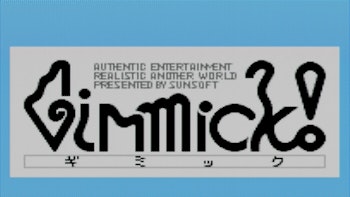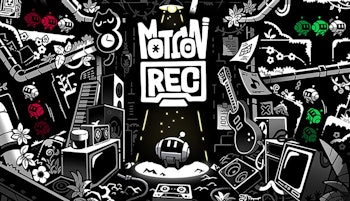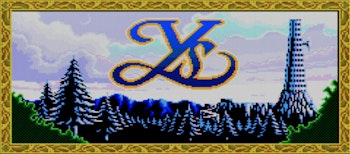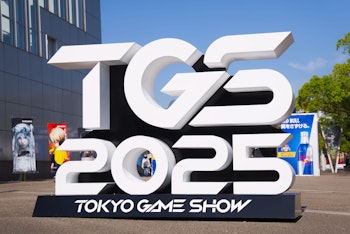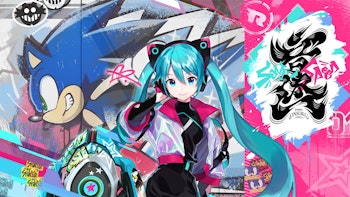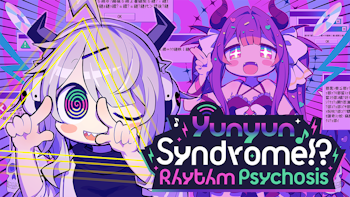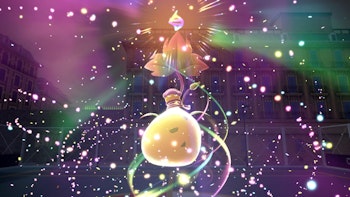
The intensity of Final Fantasy XIV’s battle system reliant on classes working together, compared to the more technical, action-oriented systems driving Monster Hunter action, might make the pair an unusual team for collaboration. Both have different playerbases, different styles of gameplay, and even with aesthetic similarities and the fact both are RPGs, it’s not like they’re natural bedfellows. Yet we’re now in the middle of a launch for the second collaboration between these two titans having first worked together on a similar partnership between the MMORPG and Monster Hunter Worlds.
The relationship between the minds behind the partnership, Monster Hunter Wilds producer Ryozo Tsujimoto and Final Fantasy XIV producer Naoki Yoshida, goes back further still.
Speaking at a conference for members of the press at Tokyo Game Show 2025 alongside Monster Hunter Wilds director Yuya Tokuda, Tsujimoto noted how their long friendship allowed the pair to easily transcribe this mutual respect into a professional setting. As Tsujimoto explained, “For a bit of the background of how we got started in this collaboration, I’ve known Yoshida for a very long time, about 10 or 15 years, and I've always had a great deal of respect for his creativity and commitment to game development. When we finally got to work together on the Monster Hunter Worlds collaboration, it was quite a casual approach where we were like ‘is there anything we could do together in our respective games?’, which is how we ended up with that original collaboration.

“Last year at Gamescom in Cologne I had dinner with Yoshida-san and my team, and again we got casually onto the topic of how much fun it was last time collaborating. Wilds hadn’t yet released at the time, but we were showing it off at Gamescom and it was on our minds. We didn’t decide there and then, but we agreed to have more productive discussions about working together. With Yoshida being quite a globetrotting man we finally caught up at Tokyo Game Show, and we set in stone then that we should work on something together.”
The result is a mix of a new quest and raid boss inside Final Fantasy XIV designed around and starring Wilds’ main antagonistic monster Arkveld, the White Wraith, as well as a new monster fight inside Wilds against Omega Planetes, inspired by the high-level raid boss from XIV. As part of this, mechanics from the two games are integrated into their respective titles, not to transform the games into the other but to create an effective synergy between select mechanics that allow these events to feel like respectful homages to their partner titles while retaining the identity of both games. It could even provide ideas for future titles or space to test new ideas in the liberated ruleset of a collaboration.
Tokuda noted, “ If you played the original Monster Hunter Worlds collaboration [with Final Fantasy XIV] featuring Bahamut, we included for the first time in Monster Hunter Worlds the system where one player is able to pull aggro from a monster and the other members of the team can treat them like a tank [to take damage]. Having different roles like DPS is very Final Fantasy and previously we’d never included a system like that in Monster Hunter before. Even things like a boss stacking ranged attacks which flow out of them at a certain amount of timing while you [the player] needs to find the right space to avoid taking damage, was a unique idea that we’d never included in Monster Hunter before.

“This gave us a chance to test these mechanics in a bit of a safe space. If it didn’t seem to go over well with the player base we would perhaps not implement it in the future as a Monster Hunter mechanic, but we found with Worlds that players found it to be a really refreshing take on the battle system. We ended up including things like this with other monsters since then, and you can experience it with the Omega fight here also.”
While this event released in Monster Hunter Wilds on September 29th, we were treated to an early demo of the fight at TGS which gave us a chance to see these ideas in action. Picking our weapon of choice (the Dual Blades), we ride our chocobo-themed Seikret and get right into the action. Omega Planetes is distinct from other creatures in the series, more machine than beast as it fires lasers with warnings of areas of attack that you must dodge while inflicting damage. It makes speedier weapons the preferred choice considering both the speed of the creature and the intensity of its attacks, but that didn’t make it a foregone conclusion.
The Soul of the Pictomancer ability allows you to cast pictomancy spells taken from Final Fantasy XIV such as Pom Motif against the creature, another form of assault that coupled with great teamwork is necessary to get through the creature. Rather than the thrill of the hunt, this is pure battle: the mission dropped us in a camp next to the fight and sent us directly into combat, with the battle being split into stages each in a new arena that a linear path would take us towards.
It’s far from an easy fight, particularly with its sheer strength and the tight time limit on the fight. The difficulty puts it on par with the endgame monsters of Wilds, fitting considering its status in Final Fantasy XIV, and on a first attempt was not something we were able to defeat inside our limited time available.
While we didn’t get a chance to participate in the Final Fantasy XIV side of this collaboration, it will require players to have cleared Dawntrail and be level 100 to participate. The Windward Wilds places you in direct competition with Arkveld in a high-level raid with an extreme varient also available. Almost no assets were re-used from the previous collaboration, according to Yoshida, and this was due to the team taking a different approach to the fight and new content compared to their last event.

“With our first collaboration with Monster Hunter Worlds, when approaching we were trying to figure out how we're going to recreate that feeling of Monster Hunter in the world of Final Fantasy XIV,” Yoshida explained. “But ultimately, the games are completely different. You have Monster Hunter, where the base is an action game, while with Final Fantasy XIV you have target-based attacks, global cooldown effects, things that are completely different mechanically. During that first collaboration, we tried to get something that was close to the feel of Monster Hunter, we felt as the development team we weren’t able to get something that felt as good. There were a lot of players that seemed to like it, but for us it was a challenge of what can we do next time to make it even closer to that feeling.
“ When we got this opportunity as talks began on a second collaboration, the first thing that we did was we went back and discussed ideas with our team on how we were going to approach this differently than before. We have this great game in Monster Hunter and this great monster, but rather than trying to get the battle we were going to create closer to Monster Hunter, we decided to go a different path and make it feel as XIV as possible. That being said, one thing that won’t change is that rather than watching your casting bar, you need to watch the monster instead. What we are creating here is something that will introduce players from XIV to this wonderful lore and story that Monster Hunter has, but have that feel natural in Final Fantasy XIV.”
It’s still relatively rare, beyond major online titles with an ecosystem designed for it like Fortnite, for collaborations across companies to become a reality despite the often shared mutual respect many developers in the industry share for one another. It is often not just likely but almost certain that you’ll spot developers from various companies trying out games of others on the show floor of TGS during business days, meeting each other here or at various parties or in private around the show. Especially in the Japanese scene where the highest echelons of the scene are staffed with experienced developers still here from the earlier days when the industry was more compact also strengthens these bonds.

It doesn’t make collaboration easier, but it does start the conversation. Yoshida expressed shock that the Capcom team were so willing to almost immediately entrust the team with the main antagonist for Monster Hunter Wilds for use as part of the collaboration, expecting pushback or a request to use another creature just for their sheer importance. Omega was chosen for Monster Hunter due to how the monster integrated into the themes of Ancient Civilizations explored in Wilds as well as how their attack patterns made for a nice change of pace to other monsters planned for the update, but it, too, was a quick agreement.
Indeed, as the conference began to conclude, both noted how the approach of the other to treating the work of others with respect was key to entrusting their ‘babies’, in a sense, with another studio.
“One thing both of our teams have in common is the passion of each development team, and it’s a passion not just for their own games but gaming in general,” explains Yoshida. “As a producer, that makes things so much easier because I know that team is going to give their all, and that goes not only for the amount of time necessary but the development cost, also.”

Tsujimoto affirms this, stating, “ Something that I felt great commonality between our team's approaches was that we respected each other's titles enough to not just use it as set dressing for the same old thing and have it only be a visual call out. We wanted to respect it enough to have the playfield be interesting and unique and fun, while also making the content as good as possible because we are, after all, borrowing something which is a very precious creative element of their game.
“They're doing that from us and making sure that each element is gonna be a good fit for our own title and make it is fun for own players, making sure their players are able to get on board with it. The content we made is something where we felt we had that approach, and I know they felt that as well.
“We both equally respect each other's games, I think, and that led to very fruitful collaboration.”
For all the games are different, the ideas and people behind them are not. That’s what allows Final Fantasy XIV and Monster Hunter to feel like natural enough bedfellows that not just one but two collaborations could be produced and successfully launched. As we stand amidst the launch of this latest partnership, it shows that a good collaboration is far from just bringing two things together, but embracing them and creating something new that can perhaps inspire grander ideas in the future. In that sense, it’s hard not to call this anything other than a roaring success.
